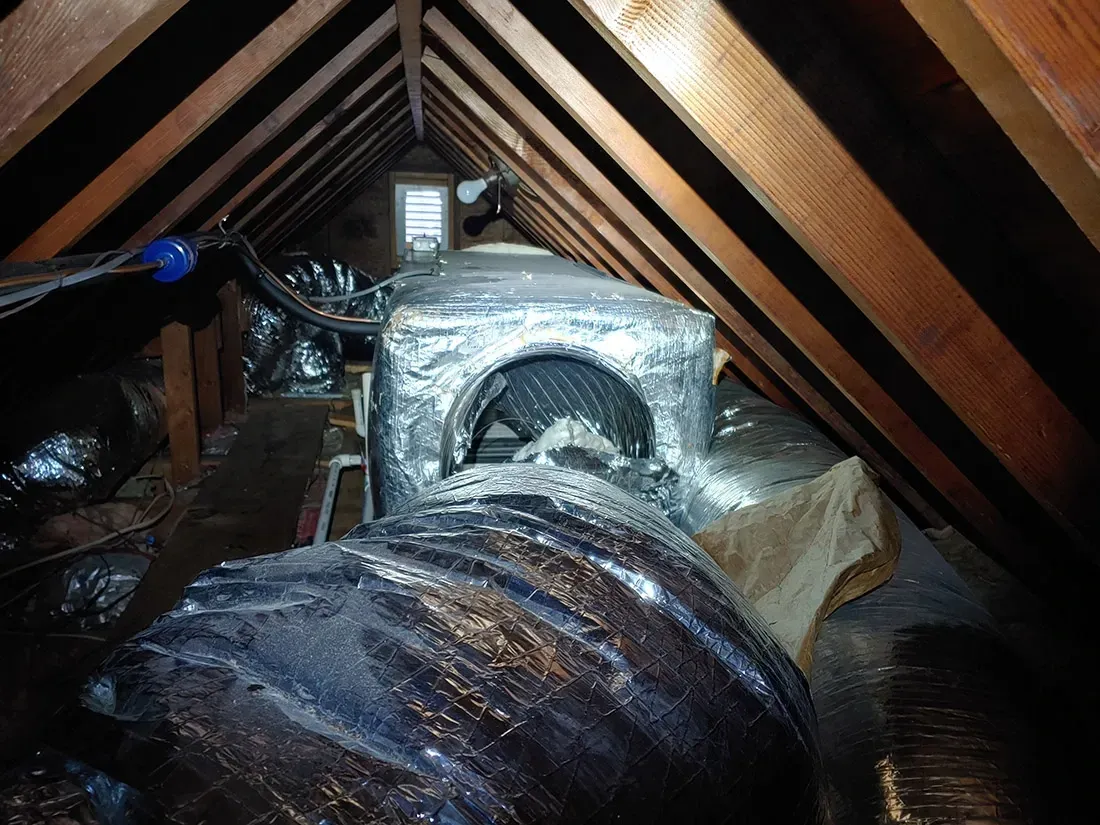Top Tips for Keeping Debris and Moisture from Your Air Ducts

Maintaining clean air ducts is essential for ensuring good indoor air quality and the efficiency of your HVAC system. Dust, debris, and moisture can accumulate in your air ducts, leading to poor air quality, increased allergens, and even potential mold growth. Poor indoor air quality can lead to respiratory issues, allergies, and other health problems.
Therefore, regular duct cleaning is necessary, especially in areas with high humidity, like Myrtle Beach, SC. This practice not only enhances air quality but also prolongs the lifespan of your HVAC system, saving you money on energy bills and potential repairs.
Once your system is professionally cleaned, it must be free from dust, dirt, and moisture. Here are some tips for ensuring your HVAC system remains clean and operational.
1. Regular Maintenance and Inspections
Regular maintenance and inspections are the backbone of a healthy HVAC system. By scheduling these with our professional HVAC service, you can rest assured that potential issues are identified early, preventing them from escalating into significant problems. This proactive approach provides peace of mind and ensures that your system is in good hands. Our professionals can clean and maintain your system, guaranteeing it operates efficiently and stays free of debris and moisture.
2. Use High-Efficiency Air Filters
Investing in high-efficiency air filters and replacing them regularly is a simple yet effective way to reduce the dust and debris entering your ductwork. When checked monthly and replaced at least every three months or as the manufacturer recommends, these filters can significantly improve indoor air quality, putting you in control of your home's environment.
3. Seal and Insulate Your Ducts
Properly sealing and insulating your ducts, particularly in attics and basements, is a proactive step in preventing dust, debris, and moisture from entering the duct system. This simple measure can go a long way in maintaining the cleanliness and efficiency of your HVAC system, giving you peace of mind and control over your indoor air quality.
4. Control Humidity Levels
Maintain indoor humidity levels between 30% and 50% to prevent moisture buildup in your ducts. Use dehumidifiers in damp areas and ensure your home is well-ventilated. High humidity levels can lead to condensation, creating an environment conducive to mold growth.
5. Clean and Maintain Vents and Registers
Regularly clean your vents and registers to prevent dust and debris from entering your duct system. Use a vacuum cleaner to remove dust from the vents and wipe them down with a damp cloth. Ensure they are free from obstructions to maintain proper airflow.
6. Prevent Pest Infestations
Pests such as rodents and insects can enter your ductwork, leaving droppings and other debris behind. Ensure your home is adequately sealed to prevent pests from entering. If you suspect a pest infestation, contact a pest control professional immediately to address the issue.
7. Monitor for Mold
Regularly inspect your ducts for signs of mold, especially if you notice musty odors or increased allergy symptoms. If you find mold, contact our team of professionals for thorough cleaning and mold remediation. Mold can cause serious health issues and should be addressed promptly.
8. Minimize Dust and Dirt in Your Home
Keep your home clean to reduce the dust and dirt inside your ducts. Vacuum regularly, use doormats to reduce tracked-in dirt, and consider removing shoes when indoors. This reduces the overall dust load in your home, benefiting your ducts and indoor air quality.
Don’t Forget the Importance of Clean Air Ducts in Myrtle Beach
By following these tips, you can maintain a cleaner and more efficient HVAC system, ensuring better air quality in your home. A cleaner and more efficient HVAC system provides better air quality and reduces energy consumption, lowering energy bills. If you’re looking for professional assistance with duct cleaning in Myrtle Beach, SC, contact us to keep your air ducts in optimal condition.
Regular maintenance and proactive measures will help you enjoy a healthier and more comfortable living environment.



